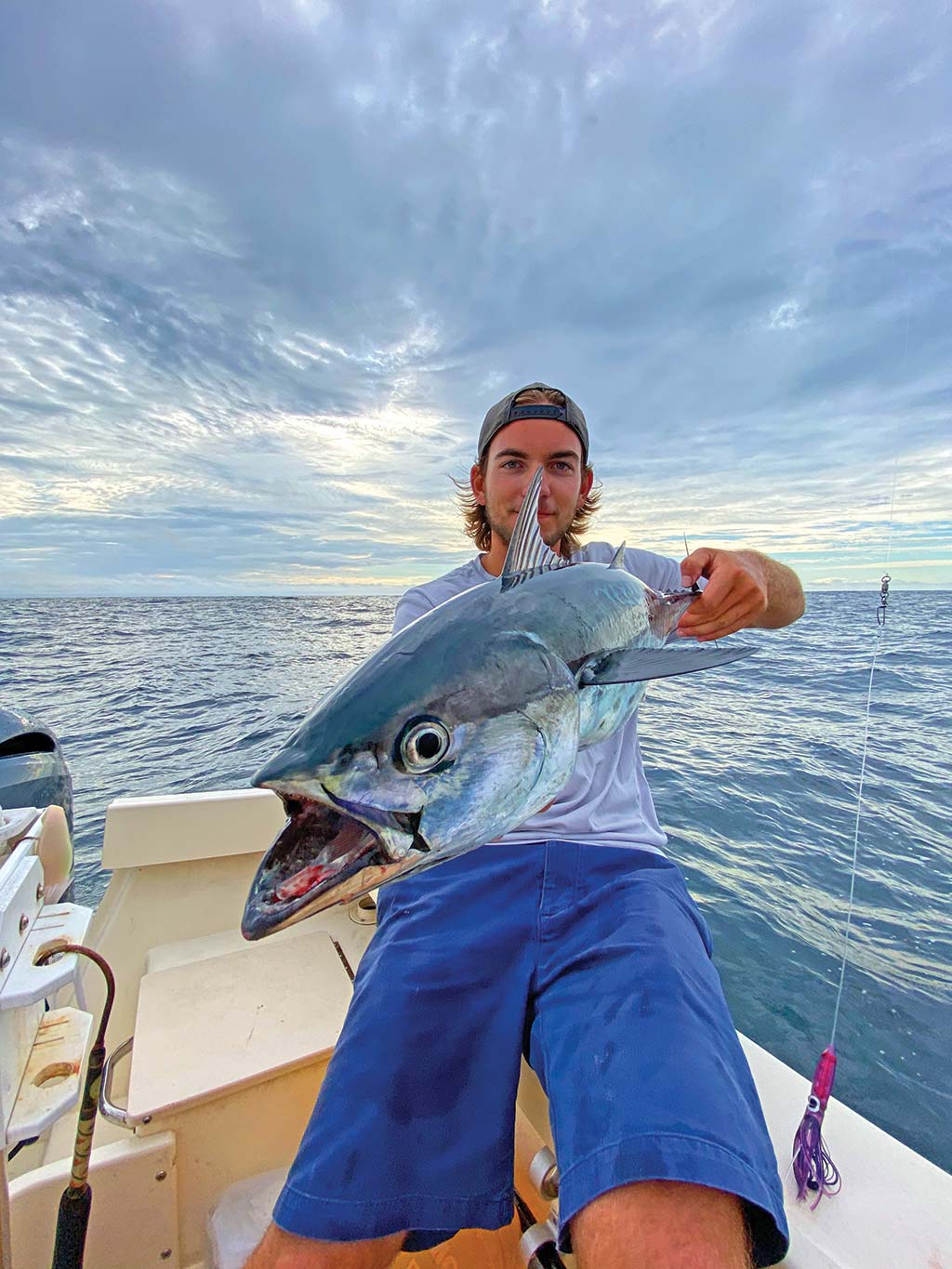
Now is the time for inshore anglers to begin gearing up for that late summer invasion of pelagics to our near shore waters.
Summer seems to go by faster than most of us would like, and August will be here before we know it. With August, and sometimes the waning days of July, come some exciting inshore action as a variety of pelagics invade out near shore waters. As we pass the half way point of summer, false albacore, bonito, mahimahi, various species of mackerel and if you are lucky, football size bluefin become prime inshore targets. This time of year, water temperatures have risen, and water clarity has improved tremendously which creates the perfect opportunity to target these species. Keep in mind these species can all be caught in one day within a few miles of shore, and it should not be a struggle to score with the proper tactics and approach. Whether you are new to the game, or a veteran offshore angler looking for some inshore fun, I promise this fishery will not disappoint.
Downsizing
When it comes to getting ready for this fishery and transitioning from offshore pelagics to chasing inshore pelagics you are going to need to keep the concept of downsizing in mind. Much of your tackle selection is going to remain consistent; the only thing that is going to change is the size. This concept will apply to almost every piece of equipment you will be using to target these species. You will transition from spreader bars from your offshore fishery to now fishing small profile chains, single lures and even plugs. Your leaders will become much lighter, along with your rods for jigging and trolling. Downsizing in this fishery allows for more bites. Even though these fish are in the pelagic family and are aggressive feeders does not mean that you should go around trolling large baits. These fish are feeding on very small baits inshore, which means you are going to need to “match the hatch’ and the best way to do that is by modifying your spread by downsizing to get the bites.
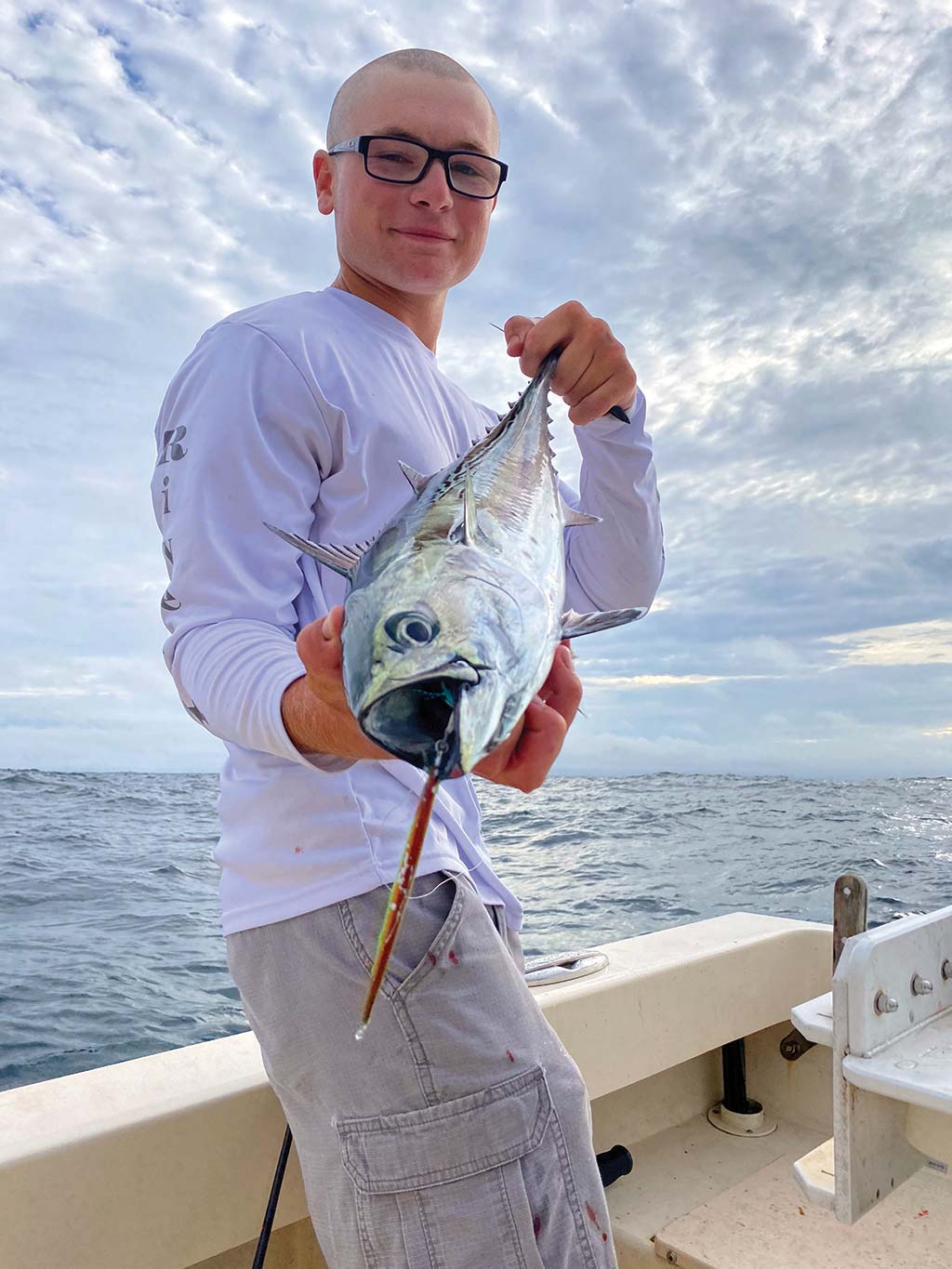
In Plain Sight
Like most other members of the pelagic family, these species tend to follow a yearly trend. The water warms up as summer progresses and the water clarity improves. As this happens, you can expect to find these species close to home. They will move on to inshore structure where they can find bait, and will stay for as long as they have a food source. You will find an abundance of mahimahi on inshore pots, as this is where they like to set up this time of year. My favorite locations to search for dolphin are around pot markers. I will bring bait to draw them out from the pots and then cast lures or troll near the pots as I toss bait towards them. On the other hand, you will find false albacore, bonito and Spanish mackerel set up on structure. Reefs, wrecks, ridges and lumps all have the potential to hold pelagics, providing there is bait present. Locations with more structure tend to hold these species better as there will be more bait present. If you have the right water temperature, clarity, and structure the bait and fish should not be far.
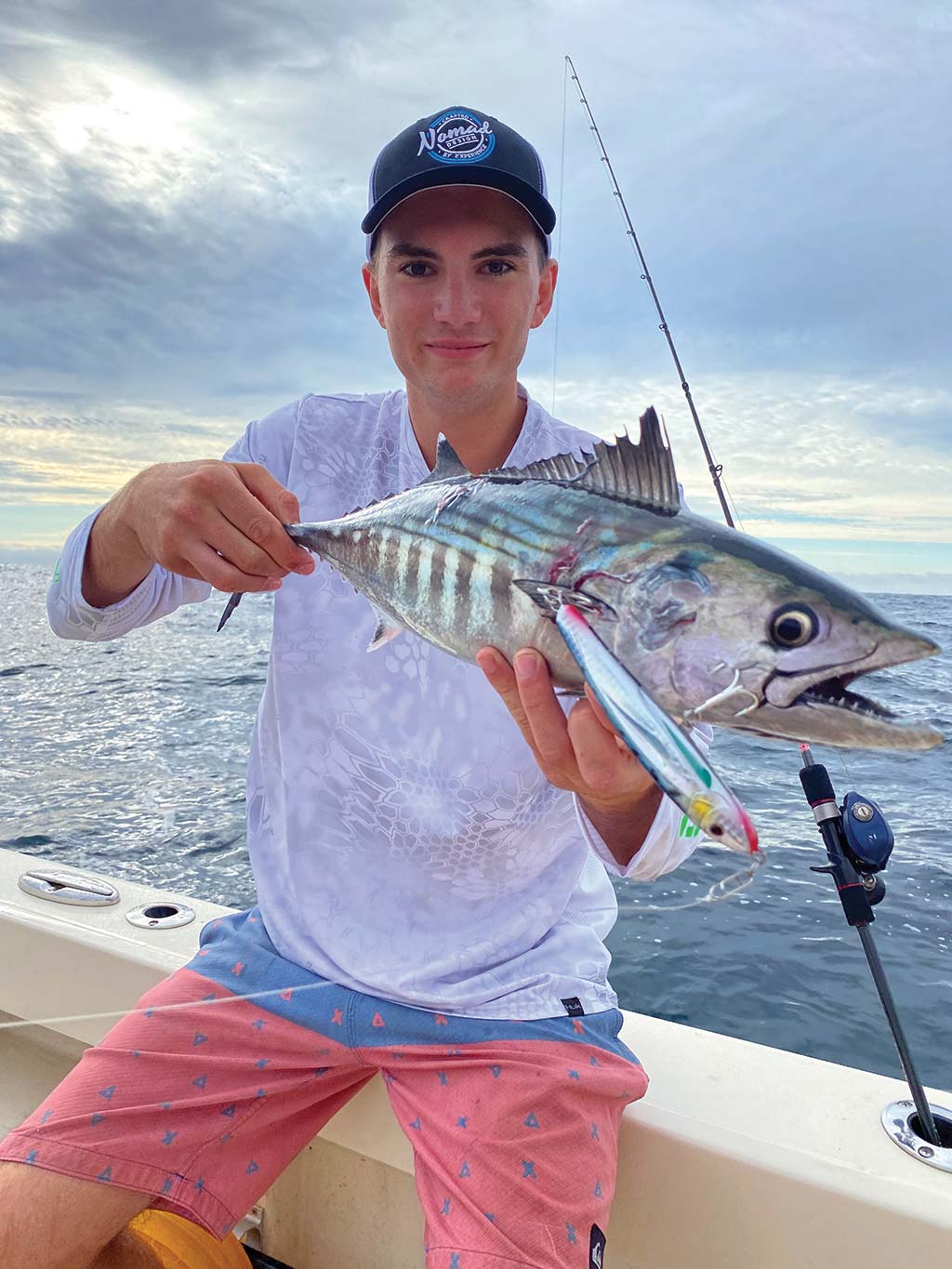
On The Troll
Trolling for these species has proven to be very effective and a trolling spread for these species tends to be more simplistic compared to trolling for offshore pelagics. Four to six conventional outfits should cover all the bases and put you in the game. My favorite trolling outfit consists of a St. Croix Mojo Salt 6-foot, 6-inch medium power fast action rod rated for 20 to40-pound braid. This rod is a blast to fish with and ideally suited for the task. It is user friendly and can easily be handled by even novice anglers. I match the rod to an Accurate Boss Fury 500 or Shimano Speedmaster 12. Both reels come with the option of having two speeds, which is a nice addition when targeting pelagics, but not essential. I fill them with 40-pound Power Pro braided line and add 50 yards of 50-pound test monofilament as a topshot. This outfit is the ideal tool when it comes to trolling pelagics on the inshore grounds.
When it comes time to put out a spread there are a few trolling lures you are definitely going to want to have in your wake. I always bring several “chain” style lures that have a few squids in a row with a skirted lure trailing them. When fishing is slow, I have a rigged “Baby Bird” by Boone, which is a teaser that causes a lot of commotion on the water’s surface. This is attached directly in front of the squids on your chain and is certain to attract more bites. Some other lures I recommend having at all times with you include the Clark Spoon, some jets, and small trolling feathers. When it comes to color selection, I like to use purple, green and pink, with purple being the top producing color.
Once the spread is set, I typically troll between five to six knots, and more often than not, I am at the higher end of that range. Certain lures may require you to troll slower so remember to keep that in mind when adjusting your speed. When fishing is slow, do not be afraid to speed up or slow down to attract a bite. Once you have hooked up, make you mark your spot and make another pass because once you have found the fish it might be an ideal time to switch over to jigging.
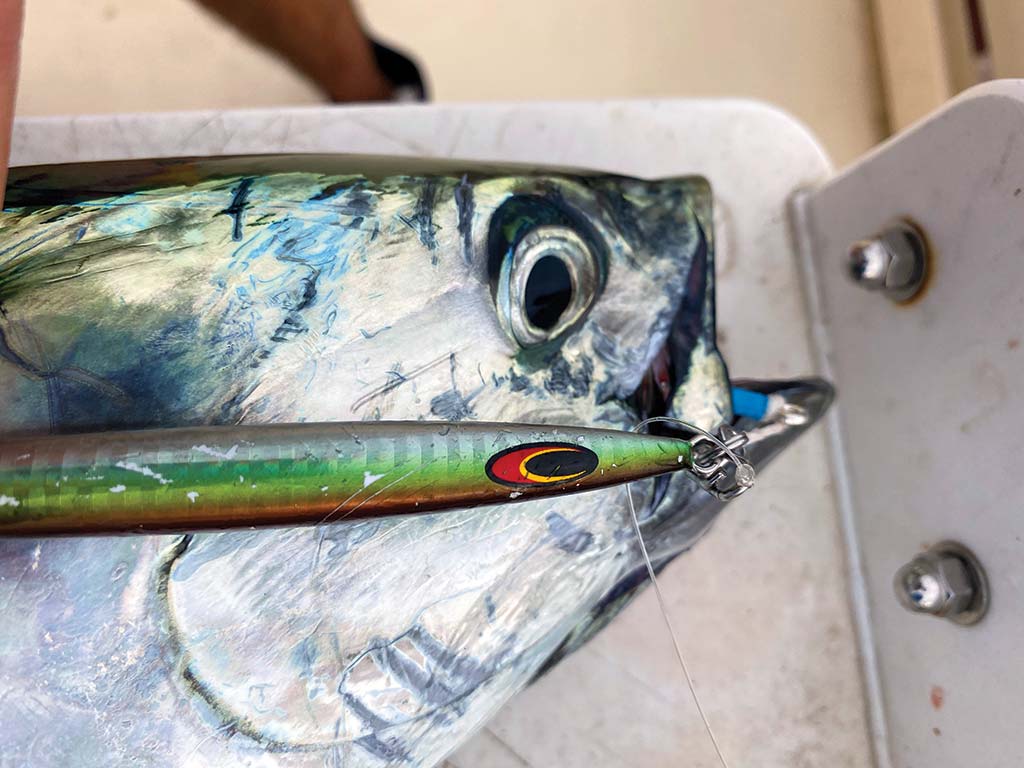
Jigging For Silver
Once you have found the fish and set up a drift, it is time to start jigging. This is where I get the most enjoyment out of fishing since nothing beats catching fish on jigs in my book. For the most part, you are going to be working jigs in the 40 to 80-gram range depending on the day, so make sure your rod is capable of properly working these jigs. The style of jigging is up to you, but I find speed jigging and slow pitch jigging to be the most effective and entertaining. For jigging, I recommend rods such as the Shimano Grappler LJ 50-160 gram or a Centaur Constellation 80-160 gram. Both are ideally suited to light-tackle jigging. When selecting a reel for jigging, go with a lightweight Shimano Ocean Jigger 1500 or the Accurate Boss Valiant 300 SPJ. The Recommended fill for either of those reels is 30-pound Max Quatro braid, which is thin in diameter and allows you to remain vertical while jigging. A 30-pound leader finishes off your outfit.
When speed jigging for these species you should be dropping your jig below the depth, at which you are marking fish, or down near the bottom. You can start to retrieve the jig at a fast pace, but allow one crank of the handle to one lift of the rod and incorporate pauses every so often. When doing this, your rod tip should be loading up and propelling your jig through the water column. Once you have reached the strike zone and get bit, make sure to set the hook hard.
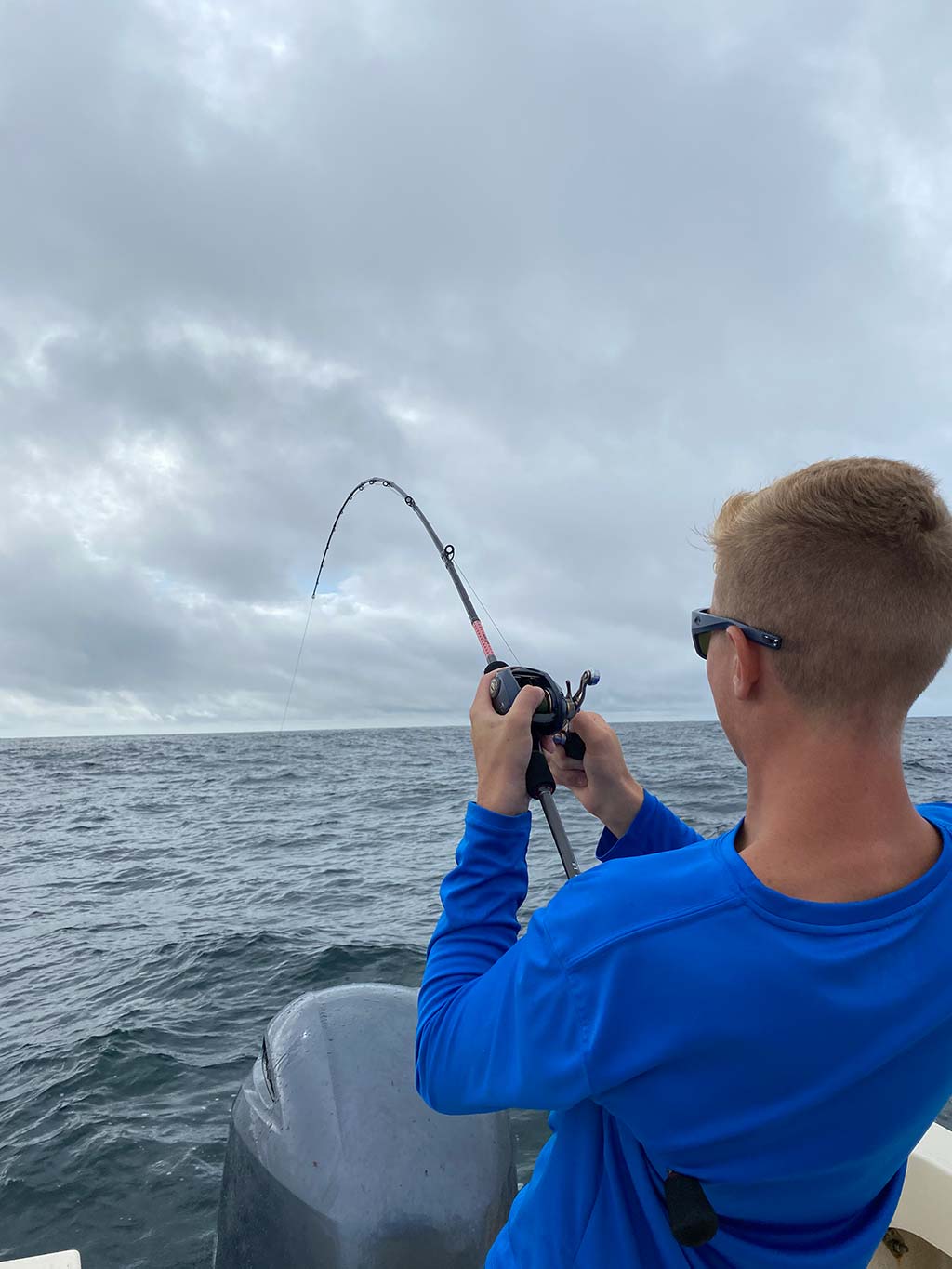
When slow pitch jigging you are going to need specialized jigs, which are center weighted. When dropping down your jig, lightly feather your spool to help keep your jig from kicking out side-to-side and working on the fall. I strongly suggest this because more than likely various species of mackerel with very sharp teeth are lingering around ready to bite off your slow pitch jig before it reaches bottom. Once again, drop your jig just below your marks or near the bottom. Once at my desired depth I will do quarter or half crank turns of the reel, allowing my rod to bend and work the jig for me. I will work a specific portion of the water column and if I don’t get hit, I will redo the process over again. When it comes to jig selection for speed jigging, I like to use the Nomad Design Streaker Jig 40-60 gram. Color selection for the Streaker varies with my top producers being Sand Eel, Sardine, Pink Sardine and Silver Glow. When it comes to slow pitch jigs, I suggest the Nomad Design Gypsea Jig 40-80 gram in Full Glow Pink, Crimson Tide, Sardine and Silver Glow. All of the Nomad Design jigs will come fully rigged and ready to fish with appropriate hook sizes making it easy for novice anglers to get in on the action too.
Another popular tactic for targeting these species is casting small plugs or light jigs. Epoxy jigs have become very popular in recent years and deliver an excellent presentation when fish are feeding near the surface. Light spinning rods in the 7-foot medium to medium/heavy range and 3000 to 4000 size spinning reels with 20- or 30-pound braid are ideal for casting. Most anglers will release false albacore False albacore are mostly a catch and release fishery although some folks do eat them. On the other hand, bonito, Spanish mackerel and mahimahi are very good on the dinner table.
This fishery is a great source of fun for light tackle anglers of all ages, and while some anglers are complaining about the summer doldrums, you will be well prepared to intercept these pelagics when they arrive in our near shore waters.





